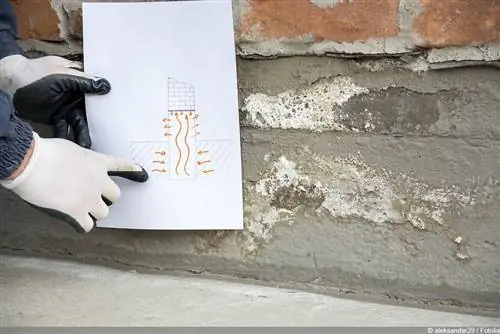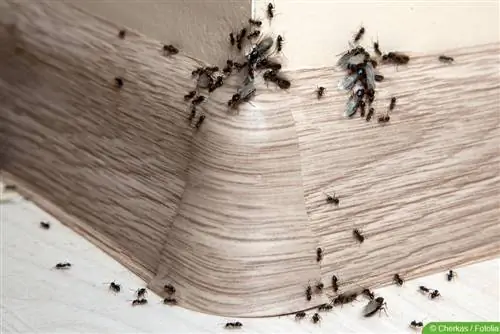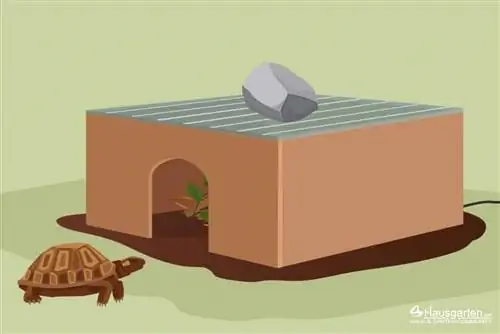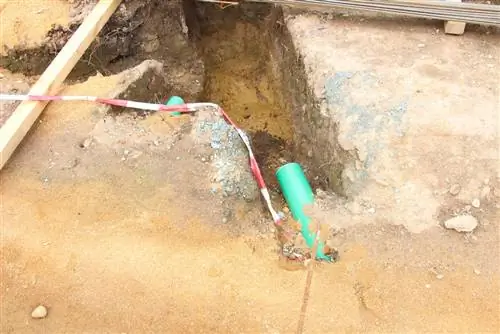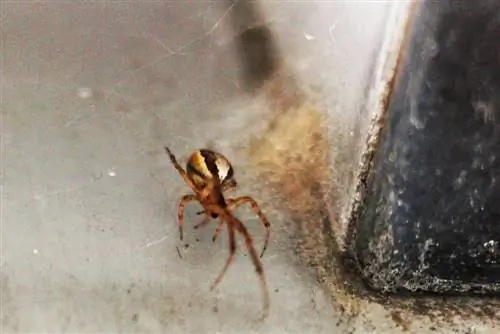- Author admin [email protected].
- Public 2023-12-17 03:39.
- Last modified 2025-01-24 12:45.
If the masonry is damp, there can be many reasons for this. There are various possibilities, from persistent incorrect ventilation to ingress of rain or groundwater. However, action must be taken in any case, because the costs of early drainage are out of all proportion to the damage to the house and he alth that the moisture can cause.
Causes
Possible reasons for damp masonry are often not easy for laypeople to recognize. However, the cause must be found in order to be able to specifically correct the damage or problem. Potential causes include, but are not limited to:
- condensation due to incorrect or missing ventilation
- Rainwater entering through a leaky roof
- Broken pipes or leaky water pipes
- Moisture rising from the soil in the walls
- Damage to masonry through which moisture or liquid penetrates
Depending on the reason, drainage must be carried out in different ways.
Possible consequences
Damp masonry can not only cause the wallpaper to peel off, but can also have other unpleasant and even dangerous consequences. These include, among others:
- Formation of mold and rot
- increased heating costs
- When water rises, there is significant damage to plaster and masonry
- sloping plaster
Over time, plaster and masonry can deteriorate to such an extent that significant costs must be expected for repairs and draining the house. Especially if it is an old house, the damage and therefore the repair costs can add up comparatively quickly.
It is therefore important to have the cause clarified quickly and to dry the walls if necessary.
Incorrect ventilation
Incorrect ventilation can cause the humidity to rise significantly and form condensation on the walls. If these cannot dry, mold can develop and plaster or masonry can suffer. Professional drying is not necessary for this reason. However, there is still a need to eliminate the trigger and moisture. The following tips can help:
Air properly
It should always be ventilated from warm to cold. This means that the air inside should be warmer than outside. This means that most moisture is transported to the outside during ventilation.
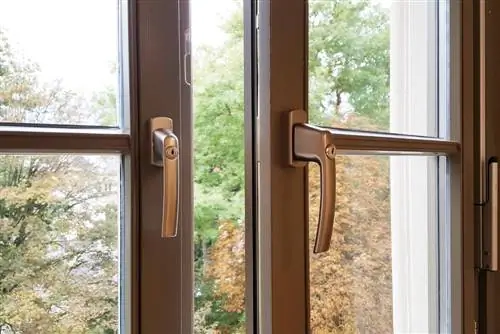
Adequate heating
Many people make the mistake of not heating some rooms - for example the bedroom - at all. This makes the walls and other surfaces very cold, which makes it easier for moisture from the air to condense or condense on them. If the air then also cools down, it can no longer absorb as much moisture and the walls remain damp. Heating and ventilation, however, can prevent this problem and keep the walls dry.
Distance to wall
Furniture should be about 20 centimeters away from damp walls. This allows the air to circulate better, which promotes drying.
Note:
If mold stains have already appeared, they must also be treated with special solutions.
Methods
Various methods can be used to drain houses. These are:
- Vertical barrier
- Injection procedure
- Wall replacement process
- Piling checker plate process
- Wall sawing method
- Electrophysical methods
Vertical barrier
A vertical barrier is necessary if the water penetrates from the outside, for example if the wall is damp after driving rain. To do this, the wall is sealed from the outside, but this can be done in different ways. For example by:
- Bitumen sheets or a so-called “black tub” that is built from bitumen
- mineral sealing slurry, the so-called “brown tub”
- Plastic sheets, the so-called “K-tub”
In these processes, the selected material is applied from the outside and seals the wall. In this way, renewed penetration of moisture can be avoided. The costs per running meter vary greatly depending on the material.
Tip:
If it is not possible to dry masonry from the outside, the injection method can be used.
Injection procedure
During the injection process, drill holes are drilled into the masonry. The drill holes are cleaned with compressed air. They are then used to soak the masonry with special solutions and thus displace unwanted moisture. The advantages are that the injection process does not affect the statics of the house and requires only a small amount of technical effort. The costs per running meter are around 80 euros, so they are very low.
The disadvantage is that the process cannot always achieve a sufficient long-term seal against moisture penetrating the masonry. This is the case, for example, if the wall is very damp or a lot of s alt has already been deposited in it due to groundwater penetrating.
Wall replacement process
If the masonry is already very badly damaged or there is a high level of s alt contamination, there is often no alternative to wall replacement. This involves drilling several core holes that overlap each other. They are then filled with fresh concrete.
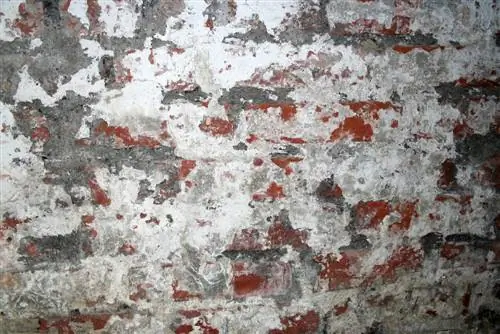
However, the process cannot be used for quarry stone masonry, and static problems can also arise. Another disadvantage is that the time and effort required and therefore the costs are very high. Expect to pay between 200 and 250 euros per square meter.
Piling checker plate process
In the ramming checker plate process, grooved chrome-nickel steel sheets are driven into the wall and thus create a horizontal barrier against moisture. The procedure is very cheap and requires little effort, but is not possible in every case. You only have to expect around 70 euros per running meter.
The ramming checker plate method can be carried out:
- with a wall thickness of up to 80, maximum 100 centimeters
- if there is a bed joint without pipes
- if there is a working space of at least one meter in front of the wall and in width
- after a comprehensive inspection of the masonry for cavities, damage and chloride content
The horizontal barrier is used when moisture penetrates from below. However, the vertical barrier can help if water penetrates from the side.
Wall sawing method
The wall sawing process is also classified as a horizontal barrier and works similarly to the ramming checker plate process. The masonry is divided with a horizontal cut and a plastic film or sheet is inserted into the cut. The effort required for this is higher than with the ramming checker plate process, which means that it is also more expensive to carry out. 100 to 150 euros per running meter must be taken into account.
Electrophysical methods
Processes of this type generate electromagnetic fields in the masonry. This is intended to “direct” the water and thus return it to the ground. Drying out the masonry works on the principle of electro-osmosis. The advantage of this is that only minimal intervention is necessary. If it is an old house or even a building under monument protection, electrophysical methods can be a good choice.
However, the disadvantages here are that the procedures are very expensive and their effectiveness is questionable. Drainage can cost around 350 euros per square meter. In addition, the methods are controversial among experts.
Support drying
In order to support the drying of the masonry, there should be appropriate ventilation and there should also be sufficient distance between the wall and furniture. If the walls are very damp, fans and a building dryer can also be useful.
Duration and prices
Unfortunately, general information can rarely be given regarding both the duration and the prices. The work, time and costs depend, among other things, on:
- the thickness of the wall
- the degree of humidity
- possibly existing damage
- statics
- the size of the area to be treated
The prices given should therefore only be understood as guidelines. The situation is similar when it comes to duration. It usually only takes a few hours to a few days to insert the materials. However, for control, planning and complete drying, several work steps should be planned over a few weeks.
Precise information is only possible once the cause of moisture penetration has been found, the masonry has been checked and a decision has been made regarding a method for drying out the masonry.

